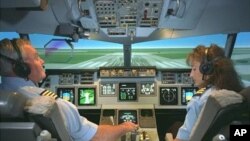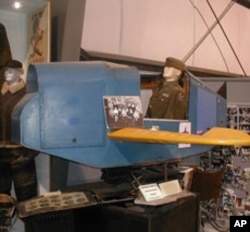In the mock-ups of airplane cockpits called flight simulators, pilots learn or perfect take-offs, landings, and how to quickly employ sophisticated electronic instruments in today's jet aircraft.
What they don't learn so well, apparently, is how to deal with sudden, potentially catastrophic emergencies.
Computer screens can simulate spins and twists and free falls, but until recently they have not been able to reproduce the yawing and shaking that can suddenly and ominously confront and panic a pilot.
The aircraft company Boeing calculates that between 1999 and 2008, almost 2,000 people died worldwide in crashes in which pilots lost control of big aircraft that might have been saved.
A recent and heavily studied example occurred in February 2009, when pilots of a turboprop encountered icing conditions as they approached Buffalo, New York, in a snowstorm. When the plane began to shake and stall, the lead pilot jerked the controls to turn the wings upward, when turning the plane's nose downward could have saved it. It crashed, killing all 49 people aboard and a man on the ground.
The USA Today newspaper reports that NASA researchers and private companies have developed simulators that realistically duplicate the shaking, rollovers and final, silent dives that occur when a big plane stalls.
There's no assurance that such a simulator session would enable every pilot who confronts a real emergency to gain control of a wildly pitching, falling aircraft.
But Michael Barr, who teaches aviation safety at the University of Southern California, told the newspaper that pilots should not be given licenses until they have shown they can successfully pull their mammoth airplanes out of violent, rocking and shaking calamities and stalls.
Even if they are make-believe.









